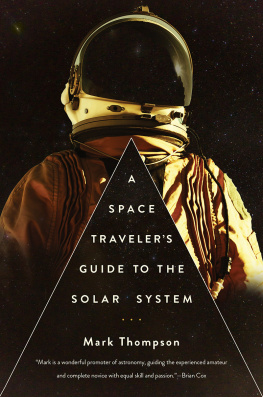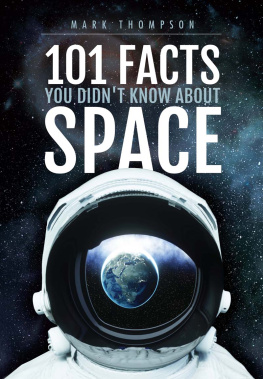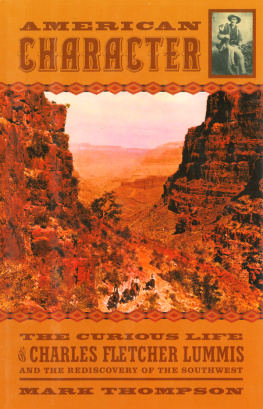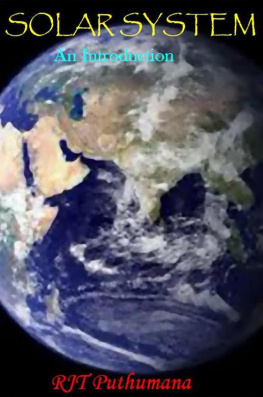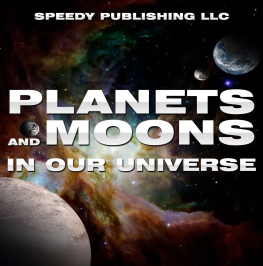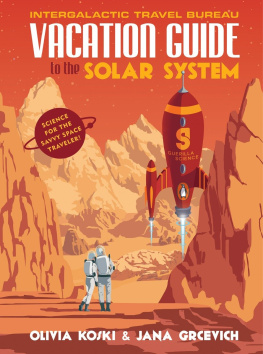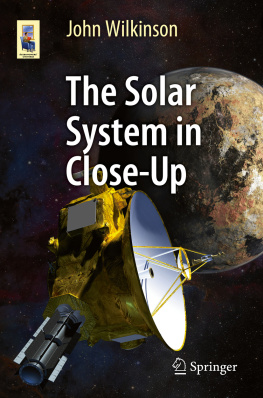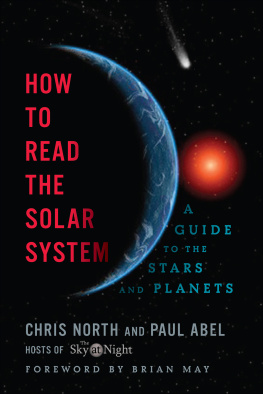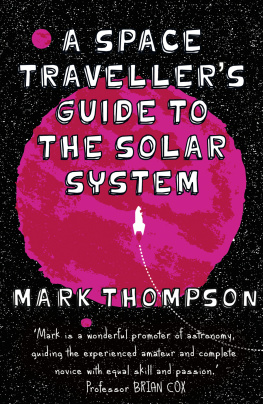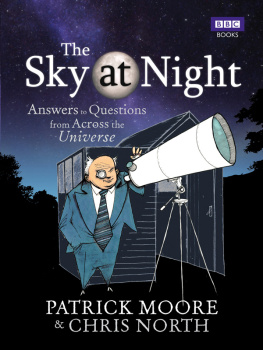
Also by Mark Thompson
A Down to Earth Guide to the Cosmos
A
SPACE
TRAVELERS GUIDE
TO THE SOLAR SYSTEM
Mark Thompson

PEGASUS BOOKS
NEW YORK LONDON
To my mum and dad, who tirelessly supported
my childhood dream to reach out among the stars.

W HEN I WAS A boy of ten I was taken along to the local astronomy society by my father and on that cold frosty January night almost thirty years ago I saw something that changed my life. As I took my very first peek through a telescope I was greeted by a view of the mighty Saturn, hanging in the inky black depths of space. I could see the delicate hues of the belts on the planet, the rings encircling it, and a moon or two as well. It was an incredible sight, and to this day I have never seen another view that has left quite such an impression on me. During that short encounter it felt as though I had been transformed into an astronaut and was in orbit around an alien world. It was magical. My childhood following that experience was often filled with boyish dreams of becoming a spaceman, and I spent much of my youth working on projects that I hoped would help to fulfil my ambition of flying around the Solar System, taking in strange new worlds and distant moons. But I was not alone. As I was making cardboard rockets, tinfoil space suits and papier-mache helmets, millions of other children were at home doing the exact same thing.
Dreams of becoming an astronaut have been common among children ever since 20/21 July 1969, when families the world over were huddled around their television sets watching Neil Armstrong and Edwin Buzz Aldrin land on the Moon and become the first men to walk on its surface. Millions were transfixed by the hazy, flickering footage being beamed live from over a quarter of a million kilometres away. Watching those brave explorers, the first humans to set foot on extraterrestrial soil, excited children; they wanted to be those men, to journey into the unknown and explore different worlds. Suddenly space travel was not just the stuff of science fiction but a reality, something tangible and achievable. Even now, decades later, the story of Armstrong, Aldrin and Mike Collins, who stayed in the command module of Apollo 11, continues to inspire countless children who dream of reaching out to the stars.
And these dreams of space exploration arent just confined to youngsters. As we grow up we may loosen our grip on the desire to become astronauts, but there are plenty of other ways through which we channel our deep-rooted fascination with the alien and the unknown. There are examples scattered through history; poets, authors, artists and musicians have produced many works based on the Universe around us. You only have to think of the beautiful orchestral pieces by Gustav Holst inspired by the planets or the plethora of science fiction stories and films to see that astronomy reaches out to people in a way no other science does. We have always been fascinated by the unfamiliar, largely because it allows our imagination free rein to conjure up all sorts of weird and wonderful fantasies. Alien worlds and their potential inhabitants are the epitome of this, and the dream of space exploration has been a part of human culture for many years. Be it through fear or fascination, it has also proved to be a unique way of bringing people together, as the photographs from NASAs Apollo era demonstrated. Not only did the images give us a new view of the Moon, they also gave us a fresh perspective on Earth. Who can fail to be humbled after seeing pictures of our fragile planet hanging in the dark, cold, lonely depths of space?
Out of my childhood dreams and games grew an interest in astronomy and the Universe that has followed me into adulthood, along with questions and ideas that have been bubbling around in my head for many years. I have always wanted to see my home, planet Earth, from space and to learn more about its relentless orbital dance with the Moon. I dream of heading to Mercury and Venus, and to the Sun to learn how it works and see just how close it is possible to get to those incredible temperatures. I want to know if it is possible to survive one of the sandstorms on Mars, or to navigate through the dense rocks of the asteroid belt as I approach the realm of the gas giants. Would it be possible for me to fly through the eye of Jupiters Earth-smashing hurricane, which I have seen through a telescope on many occasions, and are the rings of Saturn really made up of billions of pieces of rock and dust?
Approaching these questions from a theoretical perspective, I often give lectures to others like me who are in awe of the Universe. Children are regularly in the audience and it never ceases to amaze me how wonderfully insightful their questions can be. I recall a child of about ten years once asking me, What shape is the Universe? Thats a fantastic question to come from an adult, and I was surprised to hear a child ask it. It just shows that we all have probing thoughts and unanswered queries about worlds beyond our own. In some ways, I think the wonderment of children is analogous to that of our ancestors as they slowly became aware of the Universe around them. Sadly, I think a lot of adults tend to lose this fascination with the natural world; but that one question made me realize that trying to understand the secrets of space brings us all together. Certainly everyone else in the room with that ten-year-old boy was waiting for my answer. Whatever your age, we are all on this journey of learning and discovery together.
You may be surprised to know just how much we have come to learn about the Universe from remote observation. Indeed it is fair to say that we have learned more by study through a telescope than we have by direct exploration. But there are limitations, and these are largely a result of our technological capabilities. As technology develops and we discover new ways of exploring the Universe, both by remote observation and direct exploration, our view of the Solar System and the planets will change and evolve. But before you climb aboard your spacecraft it is worth glancing back briefly at the past, to take in some of the important discoveries that have led to our current view of the Solar System.
Wandrin Stars?
By Solar System, I mean the region of space that is dominated by the influence of the Sun. It includes the planets Mercury, Venus, Earth, Mars, Jupiter, Saturn, Uranus and Neptune and a whole host of comets, asteroids and minor planets. Our distant ancestors knew that these bodies were different to the stars around them because they could see them moving independently. Indeed the term planets comes from the Greek word planes, which literally means wanderer, and that nicely describes how they seem to move aimlessly against the background of the stars. For many centuries it was believed that the Earth was at the centre of this system, with the Sun, Moon, planets and stars all in orbit around us. This model was known as the Geocentric Model and it was articulated in a piece of work by the Greco-Egyptian scholar Claudius Ptolemaeus, or Ptolemy. However, more detailed observations of the motions of the planets, for example the strange backward or retrograde loops of Mars, revealed that the Earth could not be at the centre of the Solar System. An alternative model was suggested as early as 3 BC but the idea received no real support until the sixteenth century when Nicolaus Copernicus suggested the notion of a Sun-centred system.
Next page
